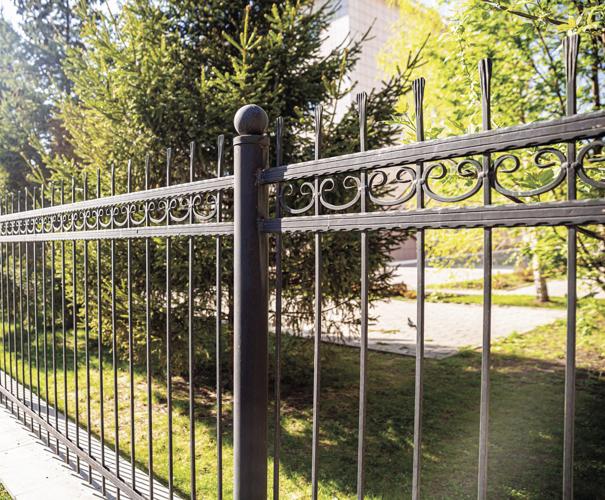All Categories
Featured
Setting up a fence around your building can substantially improve its curb, privacy, and security allure. Prior to the installment process begins, it's vital to correctly prepare your residential property to guarantee that every little thing goes smoothly. Preparing your residential or commercial property can aid avoid unexpected hold-ups, costs, or issues during the setup, making sure a professional and easy end result. Here's a guide on exactly how to prepare your property for fencing setup.
Additionally, check for any kind of below ground barriers like lawn sprinkler, irrigation pipes, or utility lines. You can usually call your neighborhood utility company to mark the places of these below ground attributes to stop unintended damage throughout installation. It's always best to make certain the ground is devoid of obstructions before the contractor begins excavating.
![]()
![]()
Conclusion. Preparing your residential or commercial property for fencing setup is a critical action in the procedure that can save you cash, stress and anxiety, and time. By recognizing regional laws, marking home lines, clearing the installation area, and connecting with your next-door neighbors, you can make sure a smooth and effective installation. Putting in the time to prepare correctly will not only make the installation procedure simpler yet also result in a stunning, long lasting fencing that enhances your property for many years to come.
- Check Neighborhood Rules and Permits. Prior to beginning the physical preparations, it's important to recognize the regional laws bordering fencing setup. You may require to obtain an authorization before installment or verify with your Homeowners Organization (HOA) if you live in a neighborhood with certain guidelines.
- Mark Your Property Lines. Understanding specifically where your building lines are is essential to ensure the fencing is set up appropriately. You do not desire to accidentally construct part of your fence on your neighbor's land, as this could lead to disputes. Take into consideration employing a specialist property surveyor to note them for you if you're uncertain of your residential or commercial property lines. Many home owners mistakenly think the borders are where sites or fencings already exist, but having a main survey done can avoid pricey blunders.
- Clear the Installation Location. Next, you require to prepare the location where the fence will be installed. Clear the area of any type of challenges, such as rocks, tree stumps, branches, shrubs, or particles. These products can conflict with the fencing setup procedure and might require added labor or devices to get rid of, which might enhance prices and time. If you have an existing fence, it will certainly require to be taken down, so think about eliminating it beforehand to stay clear of added demolition charges.
Additionally, check for any kind of below ground barriers like lawn sprinkler, irrigation pipes, or utility lines. You can usually call your neighborhood utility company to mark the places of these below ground attributes to stop unintended damage throughout installation. It's always best to make certain the ground is devoid of obstructions before the contractor begins excavating.

- Take Into Consideration Gain Access To for Installation Equipment. During the fence installation process, hefty equipment such as blog posts, miners, or trucks may require to access your building. Make sure that there is a obtainable and clear path to your residential property for these cars to prevent any kind of hold-ups. If you have a slim driveway or restricted access, it is necessary to discuss this with your service provider beforehand so they can plan as necessary. Cleaning the pathway likewise helps to prevent damage to your grass, landscape design, or any type of frameworks near the installation location.
- Communicate with Next-door neighbors. If you're mounting a fence on or near the residential property line, it's considerate to educate your neighbors regarding the task beforehand. While this is not legitimately required in all cases, providing your next-door neighbors a heads-up can help and prevent misconceptions maintain excellent connections. Some neighbors may have issues about the fence height, style, or prospective blockage of sights, so it's important to go over these information early at the same time. If you're working with a service provider, ask to be conscious of your next-door neighbor's residential or commercial property throughout installment.
- Select Your Fence Material and Design. Before setup begins, choose on the kind of fencing product and design you want. Furthermore, make sure to connect your choice with the service provider so they can prepare appropriately, guaranteeing they have all the necessary materials on hand for a smooth installation.

- Plan for the Final Touches. If you have actually decided for a decorative or customized style, the installation team might need additional time to guarantee everything straightens as intended. It's a great concept to inspect the fence once the installation is complete to make sure everything satisfies your assumptions.
Conclusion. Preparing your residential or commercial property for fencing setup is a critical action in the procedure that can save you cash, stress and anxiety, and time. By recognizing regional laws, marking home lines, clearing the installation area, and connecting with your next-door neighbors, you can make sure a smooth and effective installation. Putting in the time to prepare correctly will not only make the installation procedure simpler yet also result in a stunning, long lasting fencing that enhances your property for many years to come.
Latest Posts
Find the Best Auto Repair Offers in Montclare, Chicago
Published May 23, 25
1 min read
Experience WyHy Federal Credit Union – Top Benefits for Your Success
Published May 21, 25
1 min read
Why Routine Vehicle Maintenance at Montclare Auto Repair Reduces Costs
Published May 19, 25
1 min read
More
Latest Posts
Find the Best Auto Repair Offers in Montclare, Chicago
Published May 23, 25
1 min read
Experience WyHy Federal Credit Union – Top Benefits for Your Success
Published May 21, 25
1 min read
Why Routine Vehicle Maintenance at Montclare Auto Repair Reduces Costs
Published May 19, 25
1 min read